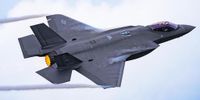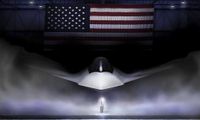In a historic announcement made on March 21, 2025, U.S. President Donald Trump unveiled the Boeing F-47, the next-generation sixth-generation fighter jet set to replace the aging F-22 Raptor. This advanced aircraft, developed under the Next Generation Air Dominance (NGAD) program, promises to enhance the United States Air Force’s capabilities in ways never seen before.
Trump expressed his enthusiasm during the White House announcement: "I'm thrilled to announce that, at my direction, the United States Air Force is moving forward with the world's first sixth-generation fighter jet, and nothing in the world comes close to it," he stated, emphasizing the cutting-edge technology expected in the F-47.
The F-47 features a blend of advanced stealth technology, artificial intelligence, and autonomous capabilities, positioning it as a significant leap forward in military aviation. Unlike its predecessors, the F-47 will function as a core component of a collaborative command system alongside unmanned combat aircraft, significantly improving air warfare strategies and effectiveness.
Importantly, the Pentagon has awarded Boeing a contract worth over $20 billion to manufacture the F-47, a move that bolsters Boeing's defense sector amid ongoing scrutiny and competition in military aviation. Initial test flights are expected before the end of the decade, with the entry into service projected for the early 2030s. Defense Secretary Pete Hegseth remarked, “The F-47 will reinforce America’s global air superiority,” highlighting its potential influence on international military dynamics.
However, alongside excitement about the F-47's capabilities, some experts are raising concerns. Zhang Xuefeng, a Chinese military affairs expert, commented on the aircraft's tailless design, which aligns with trends in sixth-generation fighters. He noted, "The F-47's appearance conforms to the general development trend of the sixth-generation fighter jet concept, noting the tailless design," indicating that the F-47 exhibits essential characteristics expected in modern fighter design.
Wang Ya'nan, Chief Editor of Aerospace Knowledge in Beijing, suggested that the F-47’s size may be limited, speculating that it may not be significantly larger than the F-22. He expressed skepticism regarding Boeing's capacity to bring forth groundbreaking innovations: “Having a company like this to lead a sixth-generation program is actually very risky.” This sentiment echoes existing doubts about whether Boeing can effectively manage such an advanced project.
In the realm of international military relations, the President’s remarks about the exportation of the F-47 have stirred controversy. Trump mentioned a scaled-down version of the aircraft would be available for sale to allies, a proposal that some analysts viewed as undermining trust among U.S. partners. Trump stated, “They want to buy them also and will certain allies will be selling them, perhaps toned down versions.” Critics have raised alarms that this could alienate U.S. allies and damage future cooperation in defense agreements.
This concern becomes even more pressing when viewed against the backdrop of current U.S. military partnerships. Denmark, for instance, is in the process of acquiring F-35s for its Royal Danish Air Force, expecting to deploy 27 aircraft to replace older F-16 jets. The complex dynamics surrounding technological trust in military collaboration reveal an urgent need for diplomatic relations to remain strong, particularly as many nations, including Russia, are actively developing their sixth-generation platforms.
Building mutual trust is vital not only for procurement of military hardware but also for broader geopolitical stability. Analysts have noted that Trump's comments risk deepening rifts between the U.S. and its allies, especially as the international community looks on while China enhances its own next-generation military capabilities. Thus, the outcome of the F-47 program has repercussions that reach well beyond the U.S. borders, potentially influencing the balance of power in international military standing.
While the F-47 represents an ambitious leap in aviation technology, the success of the program will depend as much on strategic diplomatic relations as it will on technical prowess. As the U.S. steps boldly into the sixth-generation fighter era, the world will be watching closely to see how this development shapes not only military capabilities but also international partnerships.






